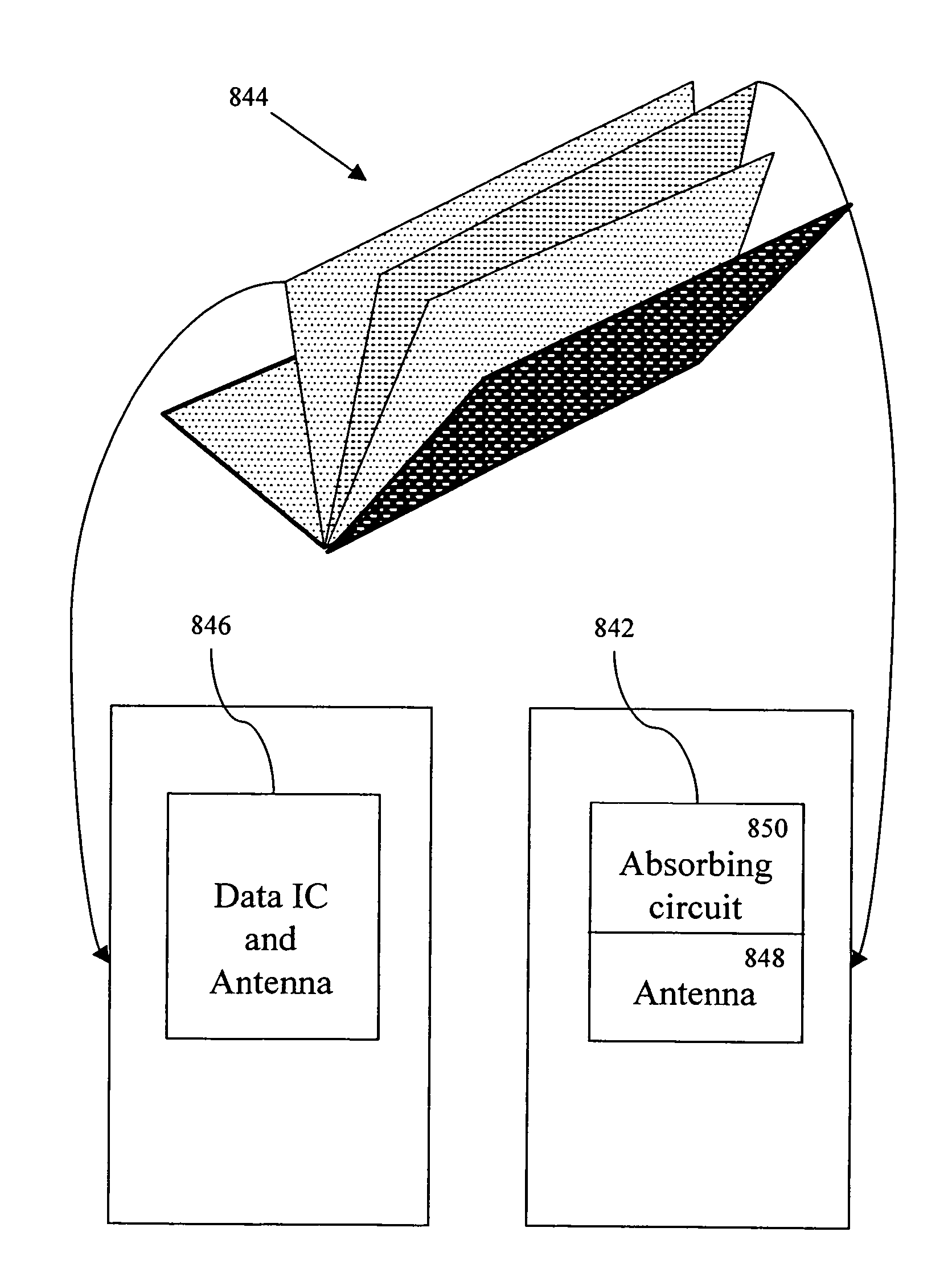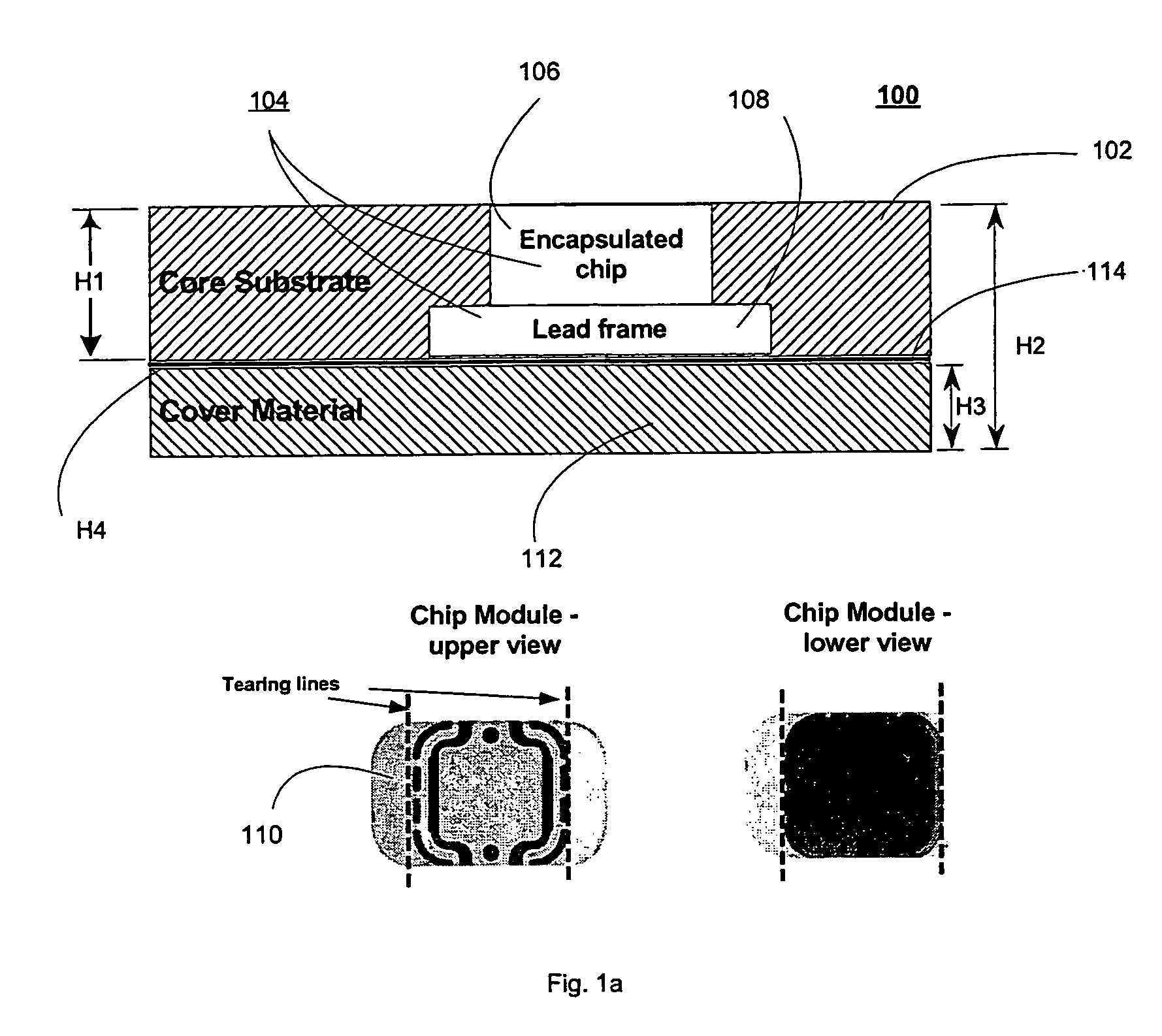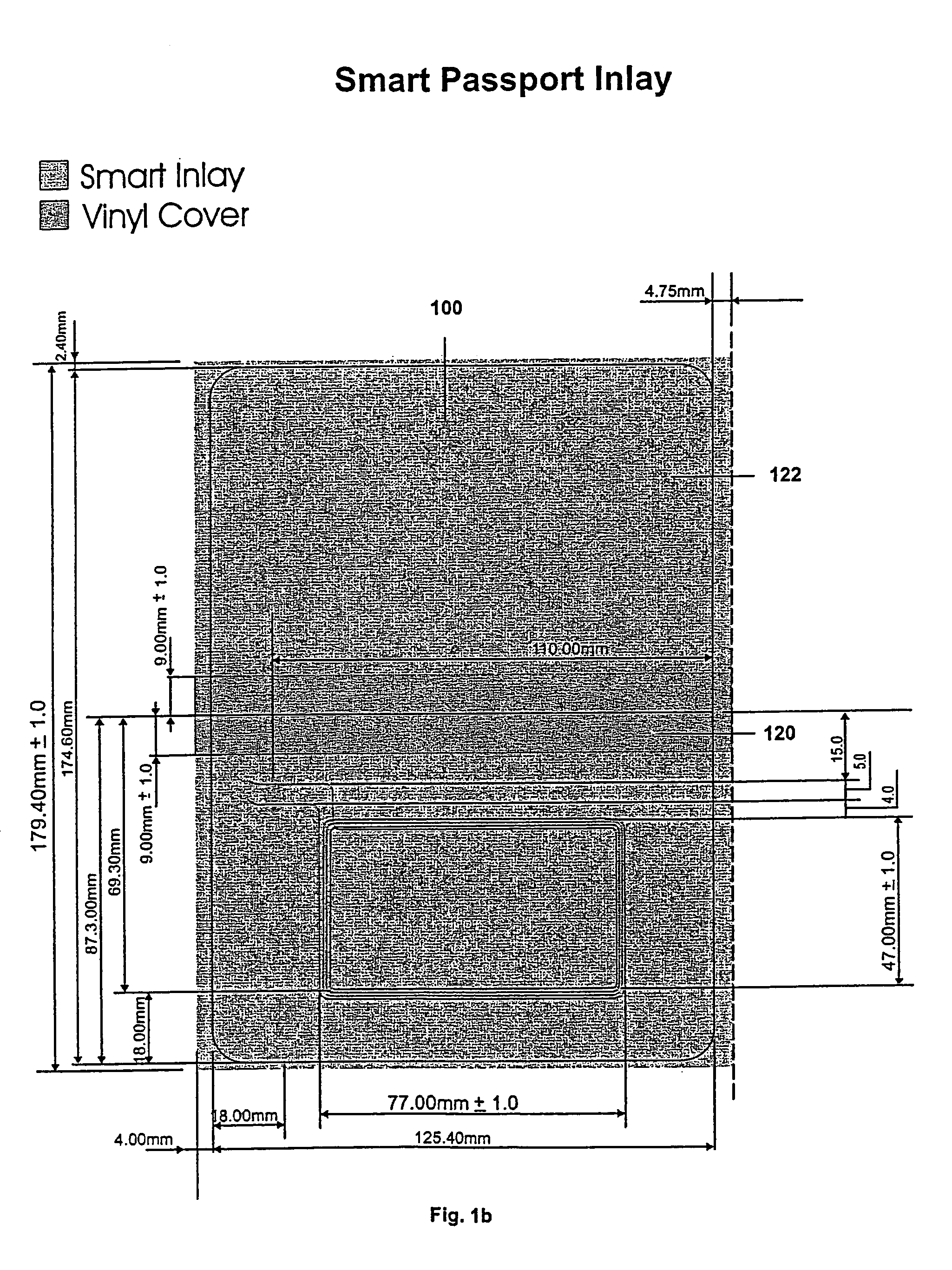Smart identification document
a smart identification and passport technology, applied in the field of tamper-free and forgery-proof identification documents, can solve the problems of no printable identification currently available to positively identify a passenger with high reliability, no means currently available to transmit such information securely, and no encryption of the biometric information involved
- Summary
- Abstract
- Description
- Claims
- Application Information
AI Technical Summary
Benefits of technology
Problems solved by technology
Method used
Image
Examples
Embodiment Construction
[0061]The present invention discloses devices and methods for providing secure, tamper-free and forgery-proof smart documents, in particular smart passports. The present invention discloses in particular a smart inlay to be used in a smart passport, and security features that make such a smart passport tamper-proof and forgery-proof. The present invention further provides an upgrade path from a regular (non-smart) paper passport to a smart passport.
[0062]FIG. 1a shows in cross section a preferred embodiment of a smart inlay 100 according to the present invention. Smart inlay 100 comprises a core substrate (or “core layer”) 102 made preferably of synthetic sheets, e.g. from Teslin manufactured by PPG Industries (www.ppg.com) or Artisyn manufactured by Darmic Inc. (www.daramic.com). Each of these materials provides a number of important advantages: each allows a judicious choice and application of tamper-proof adhesives, for example poly-vinyl-acetates (PVAs), thermoplastic adhesives ...
PUM
 Login to View More
Login to View More Abstract
Description
Claims
Application Information
 Login to View More
Login to View More - R&D
- Intellectual Property
- Life Sciences
- Materials
- Tech Scout
- Unparalleled Data Quality
- Higher Quality Content
- 60% Fewer Hallucinations
Browse by: Latest US Patents, China's latest patents, Technical Efficacy Thesaurus, Application Domain, Technology Topic, Popular Technical Reports.
© 2025 PatSnap. All rights reserved.Legal|Privacy policy|Modern Slavery Act Transparency Statement|Sitemap|About US| Contact US: help@patsnap.com



